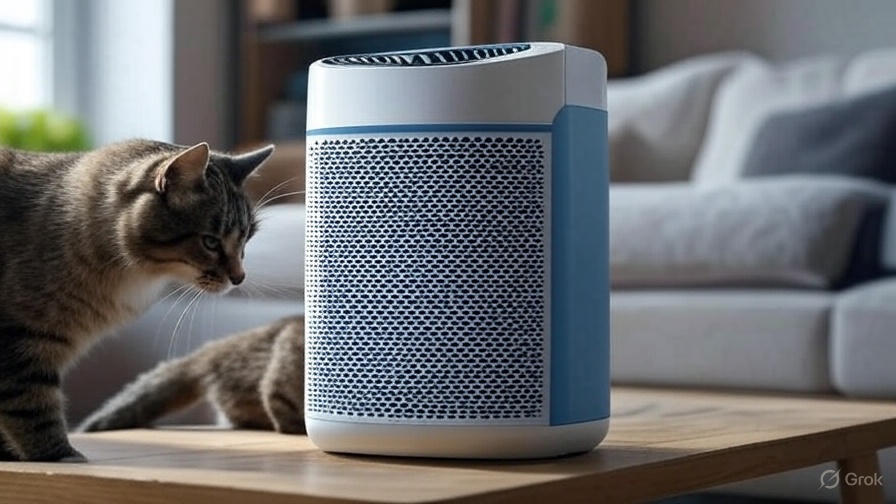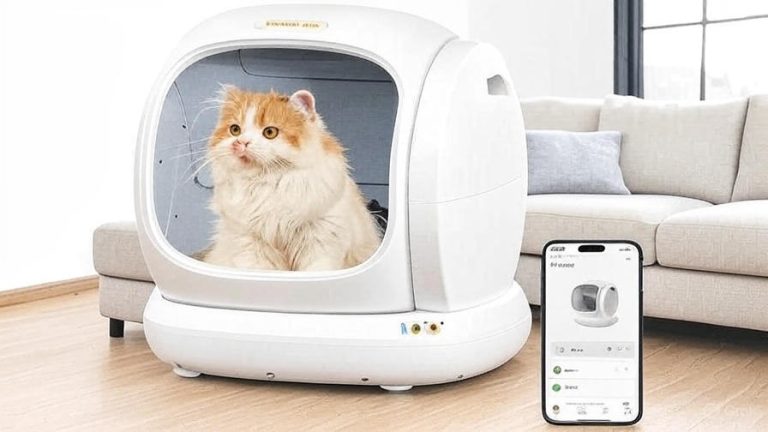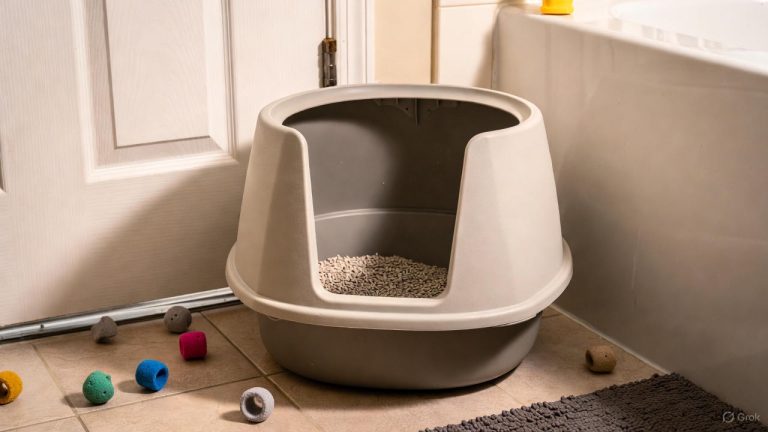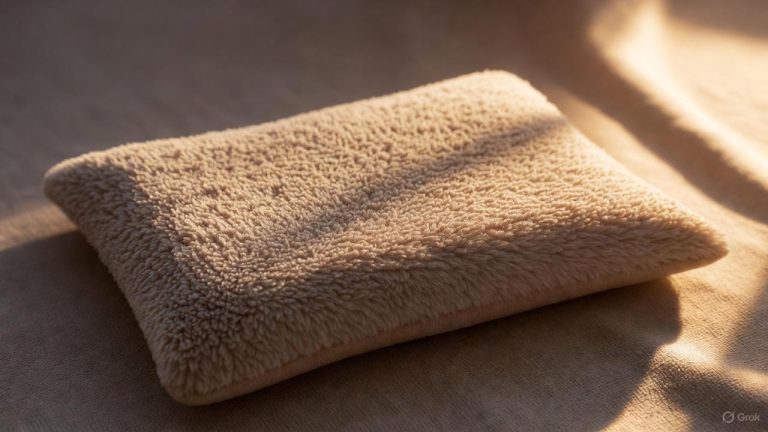5 Best Air Purifier for Cat Litter Smell In 2025
Cat owners face a persistent challenge that can affect their home’s comfort and air quality. Litter box odors permeate living spaces, creating an unpleasant environment that traditional air fresheners simply mask rather than eliminate. The solution lies in advanced air purification technology designed specifically to combat pet-related odors at their molecular level.
Modern air purifiers equipped with specialized filtration systems can transform your home environment by capturing and neutralizing odor particles before they spread throughout your living space. This comprehensive guide examines five top-performing air purifiers that excel at eliminating cat litter smells while providing additional benefits for overall air quality improvement.
How Air Purifiers Combat Cat Litter Odors
Cat litter produces ammonia-based compounds that create those sharp, pungent smells. These microscopic particles float through the air and settle on surfaces throughout your home. Standard ventilation systems often prove inadequate for addressing these persistent odors.
Effective air purifiers tackle cat litter smells through multiple filtration stages. Pre-filters capture larger particles like cat hair and dust. HEPA filters remove microscopic allergens and fine particles. Activated carbon filters specifically target odor molecules, breaking them down rather than simply masking them.
The key lies in consistent air circulation and proper room coverage. Air purifiers must process the entire room’s air volume multiple times per hour to maintain freshness. Units with 360-degree air intake provide superior performance by drawing air from all directions, ensuring comprehensive coverage.
Top 5 Air Purifiers for Cat Litter Odor Control
1. LEVOIT Core Mini-P: Compact Desktop Solution
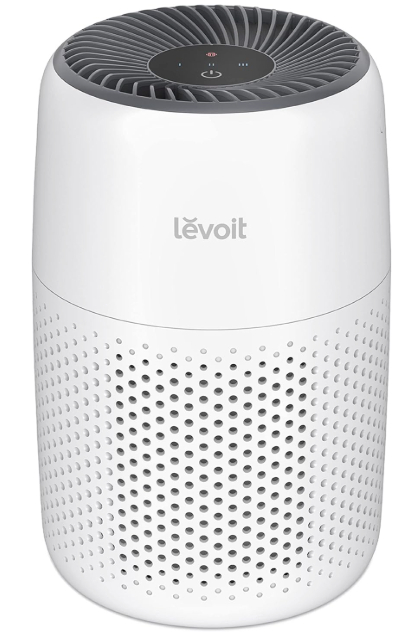
The LEVOIT Core Mini-P delivers impressive performance in a portable package perfect for smaller spaces. This compact unit features a three-stage filtration system that effectively tackles cat litter odors while maintaining whisper-quiet operation.
Key Features:
- Three-in-one filter system with pre-filter, HEPA filter, and activated carbon layer
- Fragrance sponge compartment for natural scent enhancement
- Ultra-quiet operation at just 25dB
- Portable design suitable for bedrooms, offices, and desktop use
- 161 square feet coverage area
- Energy-efficient operation
The Core Mini-P excels in personal spaces where cat litter boxes are nearby. Its activated carbon filter specifically targets ammonia compounds while the HEPA layer captures fine particles. The optional fragrance sponge allows users to add essential oils for natural air freshening without overwhelming chemical scents.
Pet owners appreciate the unit’s compact footprint, which fits easily on nightstands or desk surfaces. The quiet operation ensures uninterrupted sleep while continuously purifying the air. The simple one-button operation makes it user-friendly for all family members.
Pros:
- Exceptionally quiet operation
- Compact and portable design
- Effective odor elimination for small spaces
- Affordable price point
- Easy filter replacement
Cons:
- Limited coverage area
- Single fan speed
- Requires regular filter replacement
2. LEVOIT Core300-P: Powerful Room Coverage
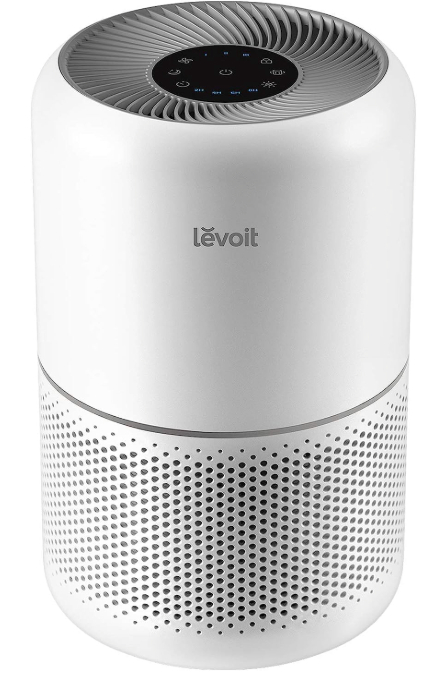
The LEVOIT Core300-P represents a significant step up in power and coverage, designed for medium to large rooms where cat litter odors can spread quickly. This AHAM-verified unit combines high-performance filtration with energy-efficient operation.
Key Features:
- 1073 square feet coverage area
- 56W high-torque motor for powerful air circulation
- Three-stage filtration with True HEPA filter
- Sleep mode for ultra-quiet nighttime operation
- Multiple fan speeds for customized performance
- AHAM verified for reliable performance standards
The Core300-P tackles cat litter smells through its comprehensive filtration system. The pre-filter captures pet hair and large particles, while the True HEPA filter removes 99.97% of particles as small as 0.3 microns. The activated carbon filter specifically targets odor molecules from cat litter.
This model’s 56W motor provides exceptional air circulation, processing room air multiple times per hour. The sleep mode reduces noise levels while maintaining effective filtration overnight. Pet owners can adjust fan speeds based on odor intensity and room conditions.
The unit’s 360-degree air intake design ensures comprehensive coverage, drawing air from all angles rather than just one direction. This feature proves particularly valuable in rooms with multiple air circulation challenges.
Pros:
- Large room coverage capability
- AHAM verified performance
- Multiple fan speed options
- Sleep mode for quiet nighttime operation
- 360-degree air intake design
- Energy-efficient operation
Cons:
- Higher initial cost than compact models
- Filter replacement costs
- Larger footprint requires more floor space
3. AIRROMI A2001: Pet-Specific Design
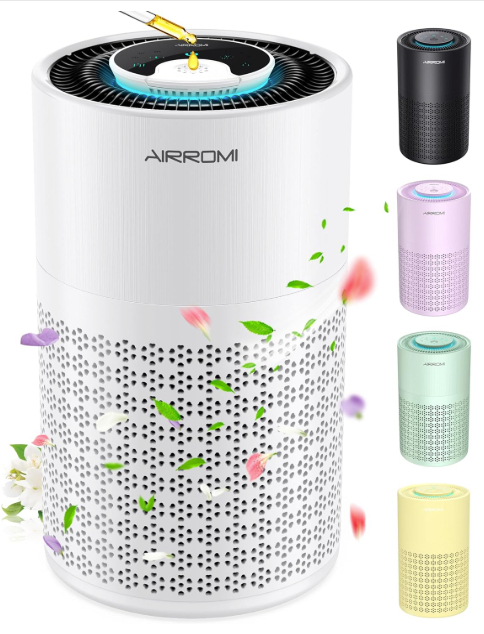
The AIRROMI A2001 focuses specifically on pet-related air quality challenges, making it an excellent choice for homes with multiple cats or strong litter box odors. This unit combines powerful filtration with pet-specific features.
Key Features:
- 990 square feet coverage area
- HEPA three-in-one filter system
- 360-degree air intake for comprehensive coverage
- Quiet operation suitable for bedrooms
- Designed specifically for pet odor elimination
- Multiple filtration stages targeting different particle sizes
The A2001’s design prioritizes pet odor elimination through specialized carbon filtration. The unit processes air through multiple stages, capturing everything from visible pet hair to microscopic odor particles. The 360-degree intake system ensures no corner of the room remains untreated.
Pet owners notice significant odor reduction within hours of operation. The unit’s quiet performance allows for continuous operation without disturbing household routines. The specialized filter combination addresses both immediate odor concerns and long-term air quality improvement.
The A2001’s coverage area makes it suitable for large bedrooms or open living spaces where cat litter boxes might affect air quality. The unit maintains consistent performance across its entire coverage range.
Pros:
- Specifically designed for pet odors
- Large coverage area
- 360-degree air intake
- Quiet operation
- Effective against cat urine smells
Cons:
- Limited brand recognition
- Replacement filter availability
- Higher noise levels at maximum speed
4. Honeyuan H13 HEPA: Large Room Performance
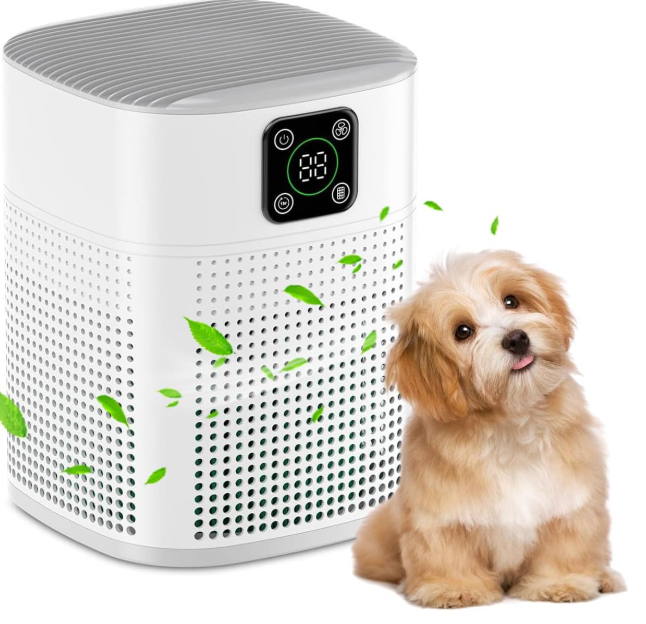
The Honeyuan air purifier delivers professional-grade filtration for large spaces up to 600 square feet. This unit combines H13 HEPA filtration with three-stage air cleaning for comprehensive odor control.
Key Features:
- 600 square feet coverage area
- H13 True HEPA filter for maximum particle capture
- 360-degree air intake design
- Three fan speed settings
- Three-stage filtration system
- Large room performance capability
The Honeyuan unit’s H13 HEPA filter represents medical-grade filtration technology, capturing particles smaller than typical home air purifiers can handle. This enhanced filtration proves particularly effective against fine odor particles from cat litter.
The three-stage filtration process begins with pre-filtration for larger particles, followed by HEPA filtration for microscopic contaminants, and concludes with activated carbon treatment for odor elimination. Each stage contributes to comprehensive air quality improvement.
Pet owners benefit from the unit’s consistent performance across large spaces. The 360-degree intake ensures uniform air processing throughout the coverage area. Three fan speeds allow users to balance performance with noise levels based on current needs.
Pros:
- H13 medical-grade HEPA filtration
- Large room coverage
- Three-stage filtration system
- 360-degree air intake
- Multiple fan speeds
Cons:
- Higher filter replacement costs
- Larger physical footprint
- Limited brand support
5. MOOKA PR1: Maximum Coverage Solution
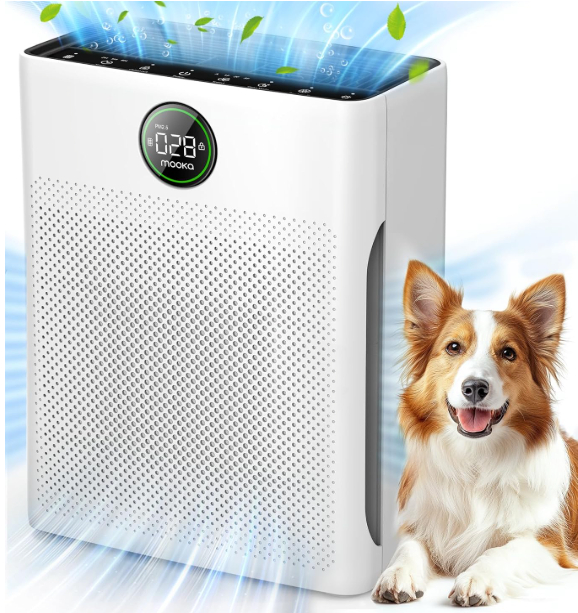
The MOOKA PR1 stands out for its exceptional coverage area, handling spaces up to 2200 square feet. This unit combines powerful performance with smart features for comprehensive air quality management.
Key Features:
- 2200 square feet maximum coverage
- Washable pre-filter for cost savings
- PM 2.5 display for air quality monitoring
- Air quality sensor for automatic operation
- Pet-specific filtration design
- Large room and open space capability
The PR1’s impressive coverage area makes it suitable for entire homes or large open spaces where cat litter odors can travel extensively. The unit’s powerful motor ensures adequate air circulation across this vast area while maintaining energy efficiency.
The washable pre-filter reduces long-term operating costs by eliminating the need for frequent pre-filter replacements. Users can clean the pre-filter monthly while replacing only the main filter system as needed. This feature proves particularly valuable for pet owners dealing with constant hair and dander accumulation.
The built-in air quality sensor automatically adjusts fan speeds based on detected particle levels. This smart functionality ensures optimal performance while minimizing energy consumption. The PM 2.5 display provides real-time feedback on air quality improvements.
Pet owners appreciate the unit’s ability to handle multiple cats and litter boxes simultaneously. The combination of high coverage area and pet-specific filtration makes it ideal for multi-cat households or homes with large litter areas.
Pros:
- Exceptional coverage area
- Washable pre-filter reduces costs
- Air quality sensor and display
- Automatic operation capability
- Suitable for multi-pet households
Cons:
- Highest initial investment
- Large physical size
- Complex filter system
- Higher energy consumption at maximum settings
Essential Features for Cat Litter Odor Control
Effective air purifiers for cat litter odors require specific features that address the unique challenges of pet-related air quality issues. Understanding these features helps cat owners make informed decisions.
Activated Carbon Filtration Carbon filters represent the most critical component for odor elimination. High-quality activated carbon contains millions of microscopic pores that trap odor molecules. The carbon chemically bonds with ammonia compounds, permanently removing them from the air rather than masking them.
True HEPA Filtration HEPA filters capture 99.97% of particles 0.3 microns or larger, including fine dust particles that carry odor molecules. This level of filtration ensures comprehensive particle removal while maintaining air flow efficiency.
Multi-Stage Filtration Effective units employ multiple filtration stages to address different particle sizes and types. Pre-filters capture visible particles, HEPA filters remove microscopic contaminants, and carbon filters eliminate odors. This layered approach provides comprehensive air cleaning.
Air Circulation Rate Proper air circulation ensures complete room coverage. Units should process the entire room volume 4-5 times per hour for optimal odor control. Higher circulation rates provide faster odor elimination but may increase noise levels.
Coverage Area Matching Air purifier coverage must match or exceed room size for effective performance. Undersized units cannot adequately process room air, leaving pockets of untreated air that harbor odors.
Placement Strategies for Maximum Effectiveness
Proper air purifier placement significantly impacts performance in eliminating cat litter odors. Strategic positioning ensures optimal air flow and comprehensive coverage.
Near Litter Box Locations Placing air purifiers within 6-10 feet of litter boxes provides immediate odor capture before particles spread throughout the room. This proximity allows the unit to address odors at their source while maintaining adequate distance to avoid litter dust accumulation on intake filters.
Central Room Positioning Central placement allows 360-degree intake units to draw air from all directions, ensuring comprehensive room coverage. Avoid corners or tight spaces that restrict air flow and reduce effectiveness.
Height Considerations Elevating air purifiers 3-4 feet off the floor improves air circulation and prevents pet interference. Table or shelf placement provides optimal positioning while keeping units accessible for maintenance.
Multiple Unit Strategy Large homes or multi-cat households benefit from multiple air purifiers strategically placed throughout living spaces. This approach ensures comprehensive coverage and prevents odor migration between rooms.
Filter Maintenance and Replacement
Regular maintenance ensures consistent performance and extends air purifier lifespan. Proper filter care directly impacts odor elimination effectiveness.
Pre-Filter Maintenance Pre-filters require monthly cleaning or replacement depending on pet hair and dander accumulation. Washable pre-filters should be rinsed with lukewarm water and completely dried before reinstallation. Disposable pre-filters need replacement when visibly dirty or every 1-3 months.
HEPA Filter Replacement HEPA filters typically require replacement every 6-12 months depending on usage intensity and air quality conditions. Pet households may need more frequent replacements due to higher particle loads. Monitor filter condition indicators when available.
Carbon Filter Refresh Activated carbon filters lose effectiveness as pore spaces fill with captured odor molecules. Replacement schedules vary from 3-6 months depending on odor intensity and filter quality. Some units feature replaceable carbon layers within combination filters.
Filter Cost Considerations Calculate long-term filter costs when evaluating air purifier options. Higher-performance filters often cost more but provide superior odor elimination. Washable pre-filters reduce ongoing expenses compared to disposable alternatives.
Energy Efficiency and Operating Costs
Understanding energy consumption helps cat owners budget for continuous air purifier operation needed for effective odor control.
Power Consumption Analysis Modern air purifiers consume 20-100 watts depending on size and fan speed settings. Smaller units like the LEVOIT Core Mini-P use minimal energy, while large coverage units like the MOOKA PR1 consume more power but cover substantially more area.
Sleep Mode Benefits Sleep modes reduce power consumption while maintaining air purification. These settings balance energy efficiency with odor control, providing continuous operation without significant energy costs.
Smart Features Impact Air quality sensors and automatic operation modes optimize energy usage by adjusting performance based on actual air quality conditions. These features prevent unnecessary high-speed operation while ensuring adequate odor control.
Annual Operating Cost Estimates Calculate annual electricity costs by multiplying unit wattage by hours of operation and local electricity rates. Most air purifiers cost $20-60 annually in electricity, making them cost-effective solutions for ongoing odor control.
Noise Level Considerations
Air purifier noise levels significantly impact user satisfaction, especially for continuous operation in living spaces and bedrooms.
Decibel Level Comparison Quality air purifiers operate between 25-50 decibels depending on fan speed settings. Units producing less than 30 decibels remain virtually silent, while those exceeding 40 decibels may disturb sleep or quiet activities.
Sleep Mode Functionality Sleep modes reduce fan speeds and noise levels for nighttime operation. These settings maintain air purification while minimizing sound disturbance, allowing continuous odor control without sleep disruption.
Fan Speed Flexibility Multiple fan speed options allow users to balance performance with noise levels based on current needs. High speeds provide rapid odor elimination when needed, while low speeds maintain air quality with minimal sound.
Placement Impact on Noise Strategic placement away from seating areas and bedrooms reduces perceived noise levels. Sound-absorbing surfaces and furniture can further minimize noise impact while maintaining air purification effectiveness.
Health Benefits Beyond Odor Control
Air purifiers designed for cat litter odor elimination provide additional health benefits for both pets and humans.
Allergen Reduction HEPA filtration removes pet dander, pollen, and other allergens that trigger respiratory symptoms. This comprehensive particle removal improves indoor air quality beyond simple odor control.
Dust Elimination Multi-stage filtration captures dust particles that carry odors and contribute to respiratory irritation. Reduced dust levels create cleaner living environments and decrease cleaning requirements.
Bacterial and Virus Capture Advanced filtration systems capture airborne bacteria and viruses, contributing to overall household health. This protection proves particularly valuable for households with elderly family members or individuals with compromised immune systems.
Respiratory Health Support Improved air quality supports respiratory health for both pets and humans. Clean air reduces stress on respiratory systems and may decrease the frequency of allergy symptoms and asthma triggers.
Smart Features and Technology Integration
Modern air purifiers incorporate advanced technology features that enhance user experience and optimize performance.
Air Quality Monitoring Built-in sensors continuously monitor air quality and adjust operation automatically. Real-time feedback helps users understand air quality improvements and optimal operating schedules.
Mobile App Control Smartphone apps allow remote monitoring and control of air purifier functions. Users can adjust settings, monitor filter life, and receive maintenance reminders from anywhere in the home.
Voice Assistant Compatibility Integration with voice assistants enables hands-free operation control. This convenience proves particularly valuable when carrying litter or managing other pet care tasks.
Automatic Operation Modes Smart operation modes adjust fan speeds based on detected air quality conditions. These features optimize performance while minimizing energy consumption and noise levels.
Budget Considerations and Value Analysis
Air purifier investments require careful consideration of upfront costs versus long-term benefits and operating expenses.
Initial Investment Range Quality air purifiers for cat litter odor control range from $50-300 depending on coverage area and features. Compact units like the LEVOIT Core Mini-P provide affordable entry points, while large coverage units represent higher investments.
Long-Term Value Assessment Consider total ownership costs including filter replacements, energy consumption, and maintenance requirements. Higher-quality units often provide better long-term value through superior performance and durability.
Filter Replacement Budgeting Annual filter costs typically range from $30-100 depending on unit type and usage intensity. Washable pre-filters and longer-lasting filters reduce ongoing expenses.
Health Cost Savings Improved air quality may reduce healthcare costs related to respiratory issues and allergies. This indirect benefit adds value to air purifier investments, particularly for sensitive individuals.
Installation and Setup Requirements
Proper installation ensures optimal air purifier performance and longevity while maintaining user safety.
Space Requirements Air purifiers require adequate clearance around intake and output vents for proper air circulation. Minimum clearances typically range from 6-18 inches depending on unit size and design.
Power Supply Considerations Ensure adequate electrical capacity and convenient outlet access for continuous operation. Consider cord length and placement to avoid extension cord usage, which may create safety hazards.
Initial Filter Preparation New units often require filter preparation before first use. Remove packaging materials from filters and ensure proper installation orientation. Some carbon filters require activation through initial operation cycles.
Performance Testing Monitor initial performance and odor reduction over the first few days of operation. Adjust placement and settings as needed to optimize effectiveness for specific room conditions and odor sources.
Seasonal Performance Variations
Air purifier performance may vary seasonally due to changing environmental conditions and usage patterns.
Humidity Impact High humidity levels can affect filter performance and odor intensity. Some units include humidity considerations in their operation algorithms, while others may require manual adjustment during seasonal changes.
Temperature Effects Extreme temperatures can impact air circulation patterns and filtration efficiency. Maintain air purifiers within recommended operating temperature ranges for optimal performance.
Allergen Season Considerations Spring and fall allergen seasons increase particle loads, potentially requiring more frequent filter maintenance. Monitor filter condition indicators more closely during high-allergen periods.
Winter Heating Impacts Heating systems can circulate odors more quickly throughout homes, potentially requiring increased air purifier operation during winter months. Dry winter air may also affect odor intensity and persistence.
Troubleshooting Common Issues
Understanding common air purifier problems helps users maintain optimal performance for cat litter odor control.
Reduced Odor Control Effectiveness Declining odor control often indicates filter saturation or improper placement. Check filter condition indicators and consider placement adjustments or increased fan speeds.
Increased Noise Levels Growing noise may indicate filter clogging or motor issues. Clean or replace filters as needed and ensure adequate clearance around the unit for proper air flow.
Filter Life Variations Filter replacement schedules may vary based on actual usage conditions. Pet households typically require more frequent filter changes due to higher particle loads and odor intensity.
Performance Inconsistencies Inconsistent performance may result from inadequate coverage area matching or competing air circulation patterns. Verify room size compatibility and eliminate air flow obstructions.
Making the Right Choice
Selecting the optimal air purifier for cat litter odor control requires matching unit capabilities with specific household needs and conditions.
The LEVOIT Core Mini-P excels for personal spaces and budget-conscious users seeking effective odor control in compact areas. Its portability and quiet operation make it ideal for bedrooms and offices where space is limited.
The LEVOIT Core300-P provides excellent balance of coverage, performance, and value for medium to large rooms. AHAM verification ensures reliable performance standards, while multiple fan speeds offer operational flexibility.
The AIRROMI A2001 targets pet-specific challenges with specialized filtration designed for animal odors. Its 990 square feet coverage handles substantial spaces while maintaining focus on pet-related air quality issues.
The Honeyuan H13 HEPA delivers medical-grade filtration for users prioritizing maximum particle capture. The H13 rating exceeds standard HEPA requirements, providing superior performance for sensitive individuals.
The MOOKA PR1 offers maximum coverage for large homes or multi-cat households. Smart features and washable pre-filters provide convenience and cost savings for extensive air purification needs.
Conclusion
Effective cat litter odor control requires dedicated air purification technology specifically designed to address pet-related air quality challenges. The five air purifiers reviewed offer distinct advantages for different household sizes, budgets, and performance requirements.
Success depends on matching air purifier capabilities with specific room conditions, odor intensity, and household needs. Proper placement, regular maintenance, and appropriate filter replacement ensure sustained performance and fresh indoor air quality.
Investment in quality air purification technology transforms homes with cats from spaces challenged by persistent odors into comfortable, healthy environments for both pets and humans. The right air purifier eliminates cat litter smells while providing comprehensive air quality benefits that enhance overall living conditions.
Regular evaluation of air purifier performance and adjustment of operation parameters ensures continued effectiveness as household conditions change. With proper selection and maintenance, these air purification systems provide reliable, long-term solutions for cat litter odor control and improved indoor air quality.

